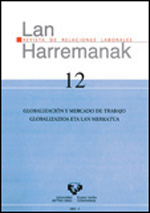Desarrollo sostenible y globalización: cuando el futuro influye sobre el presente
##plugins.themes.bootstrap3.article.main##
##plugins.themes.bootstrap3.article.sidebar##
Resumen
En este artículo nos vamos a detener en la definición de los conceptos de Globalización y de Desarrollo Sostenible, para intentar captar algunas de sus características más importantes, y hacer un balance de sus consecuencias, objetivos y evolución a través de las últimas décadas. Posteriormente nos acercaremos a algunas de las críticas que se le hacen al Desarrollo Sostenible, y que tendremos que tener presentes si no queremos que se conviertan en realidad, truncando todo el proceso. También nos detendremos a analizar las formas en las que se está sustanciando el Desarrollo Sostenible, tanto desde una perspectiva global, relacionada con el cambio de valores individuales y sociales, como desde una perspectiva más tecnológica, centrada en la eficiencia productiva y en los avances técnico-científicos. Veremos que ambas vertientes son necesarias, y pueden implementarse, pero que también debe realizarse un cambio de valores dentro del Sistema social (político y cultural). Un cambio que no se limite a los valores personales e incluso sociales (con toda la importancia que éstos tienen para poder cambiar a conductas que vayan en la línea de la sostenibilidad), sino que se extienda a la forma de gobernar, a la manera de tomar decisiones colectivas, y especialmente al reparto de poder económico.
Cómo citar
##plugins.themes.bootstrap3.article.details##
Los autores que publican en la revista "Lan Harremanak" lo hacen de acuerdo con los siguientes términos:
1. Los autores conservan los derechos de autor de sus trabajos, cediendo a la revista "Lan Harremanak" el derecho a la primera publicación de su artículo.
2. La editorial UPV/EHU Press es copropietaria de los derechos de autor, con el fin de proteger el uso legítimo del artículo publicado y el cumplimiento de los términos CC.
3. Los artículos publicados están sujetos a una licencia CC-BY de Creative Commons (a menos que se indique lo contrario) que permite a terceros compartir el artículo, con la condición de que se especifique el autor y la fuente cuando se reproduce el material.
4. Los autores pueden celebrar otros acuerdos de licencia no exclusivos con respecto a la versión publicada de su trabajo (por ejemplo, depositarlo en un repositorio institucional o volver a publicarlo como un volumen monográfico), siempre que el autor y la fuente reciban el crédito apropiado.
5. La difusión de los artículos enviados a través de Internet está permitida y recomendada (por ejemplo, en repositorios institucionales y/o en la página web del investigador), tanto antes como durante el proceso de envío, ya que esto puede generar diálogos interesantes y también aumentar las citas a la eventual publicación.

